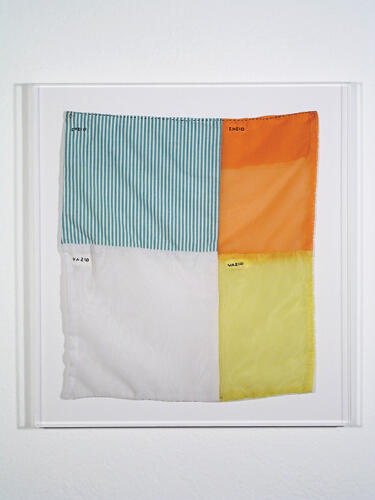Leonilson
Itaú Cultural, Sao Paulo
Leo cannot change the world. And Leonilson, the artist who wrote that phrase as a sad confession in several of his drawings knew this. All his work is pervaded with a sense of strange impotence, while he appeared to create a forceful picture of his time. His men have no faces; they are barely outlined figures rendered in transparent lines and floating in empty spaces, architectures of solitude.

In the 300 works assembled in the great ret- rospective dedicated to his work at the Itaú Cultural in Sao Paulo, this artist who emerged as a dissonant voice in the 1980s makes it clear that his life was tied to the end of utopias. In Brazil, that was the exact moment of the transition between the end of the military regime and the beginning of the democratic era and of a social and sexual opening-up that culminated in the AIDS epidemics. Leonilson was a victim of the illness at the age of 36, an abrupt interruption in his production that is clearly marked in the show.
While the paintings of his first years as an artist, large format works in which he seemed to have been searching for routes around the world, were exhibited on the ground floor, his smaller drawings were featured in the second floor. Those miniature forms were the most powerful, the point where the artist challenged the scale of exhibition spaces, as if his tragedy were of a too intimate nature, even though it was not.
Perhaps he was only the first to see what lay behind the eupho- ria that characterized his time, as if he could anticipate a universal suffering. On a pillow case he wrote the word “nobody”; a clue to a future filled with ghosts.
-
 Full Empty, 1993. Photo: Rômulo Fialdini Courtesy Itaú Cultural. Lleno Vacío, 1993. Foto: Rômulo Fialdini. Cortesía Itaú Cultural
Full Empty, 1993. Photo: Rômulo Fialdini Courtesy Itaú Cultural. Lleno Vacío, 1993. Foto: Rômulo Fialdini. Cortesía Itaú Cultural




